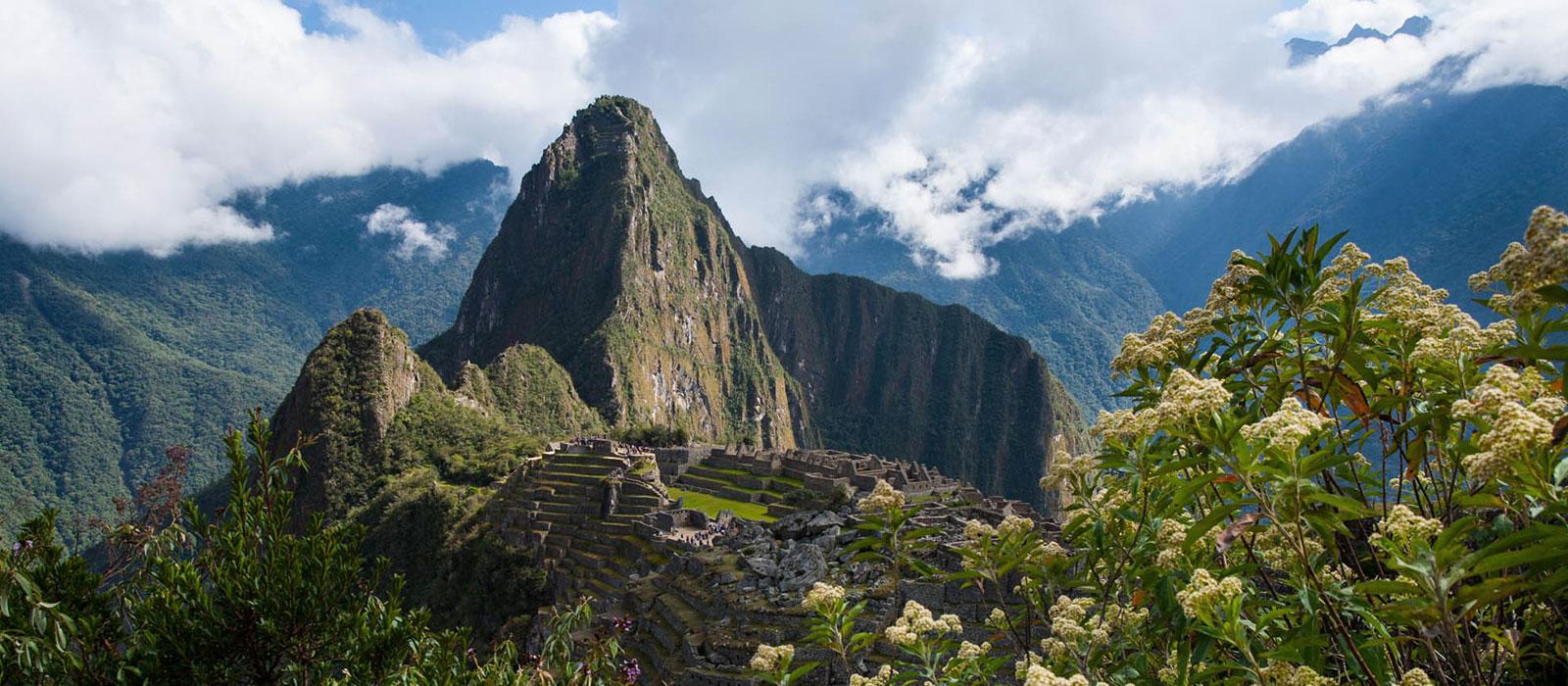
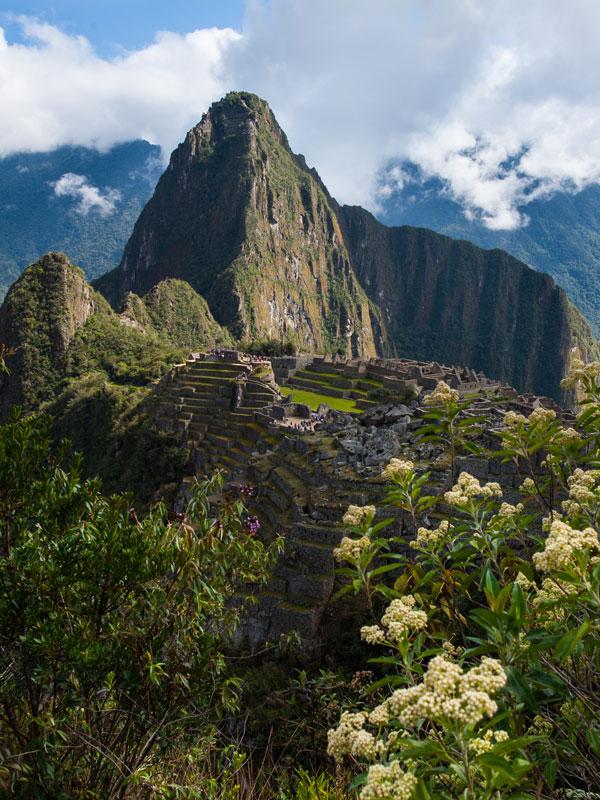
As Peru’s most iconic archaeological site, Machu Picchu has appropriately been deemed one of the New Seven Wonders of the World and a UNESCO World Heritage Site. Its spell-binding history and misty mountain scenery create a sense of wonder and mystique.
Constructed in the 15th century under the order of Inca Emperor Pachacuti, this royal citadel was only inhabited for approximately one hundred years. Machu Picchu remained hidden during the Spanish conquest, meaning it escaped vandalism and destruction. It was not until 1911 that local villagers introduced American historian Hiram Bingham to the ruins. Soon the outside world would read tales of this forgotten city and marvel at photographs of its ingenious architecture and engineering.
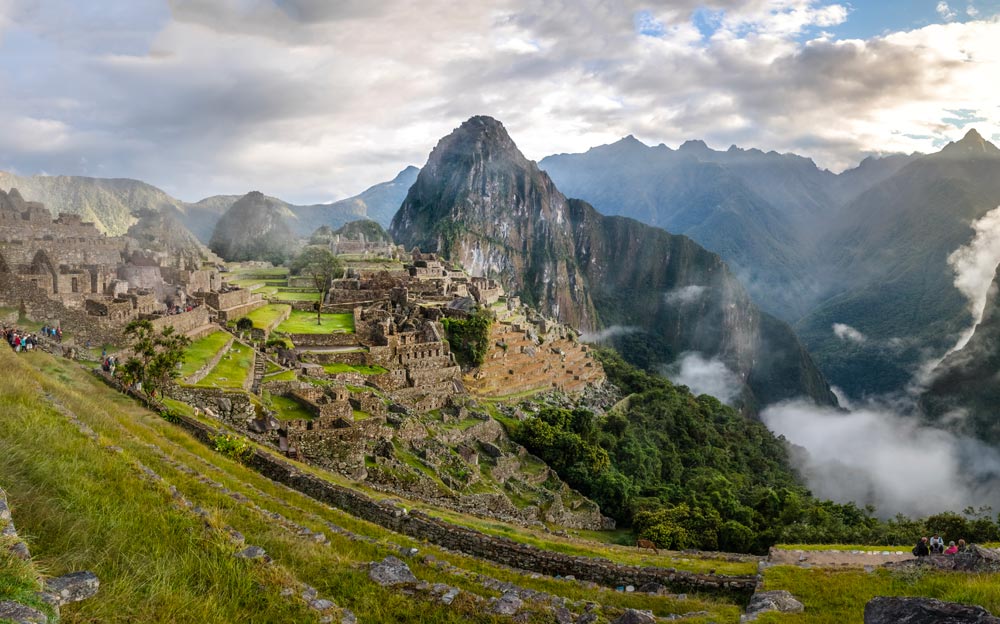
What was once an estate for the Inca elite is now an international tourist destination. Visitors are invited to explore the ancient citadel’s exquisite stone masonry and delight in its sublime mountain views. Expert local guides lead travelers through imposing archways and up serpentine staircases to reveal hidden secrets of the Incas. Whether traveling by train or on foot, Machu Picchu is sure to satisfy any traveler’s thirst for knowledge and adventure.
The name Machu Picchu originates from the Quechua word “Machu Pikchu” meaning “old mountain.”
Machu Picchu is located in southern Peru’s Andean cloud forests, where the towering mountains of the Andes meet the lush Amazon jungle. Only accessible by foot or by train, it is about 45 miles (73 km) from Cusco. The landscape is mountainous and the terrain can be steep in some areas.

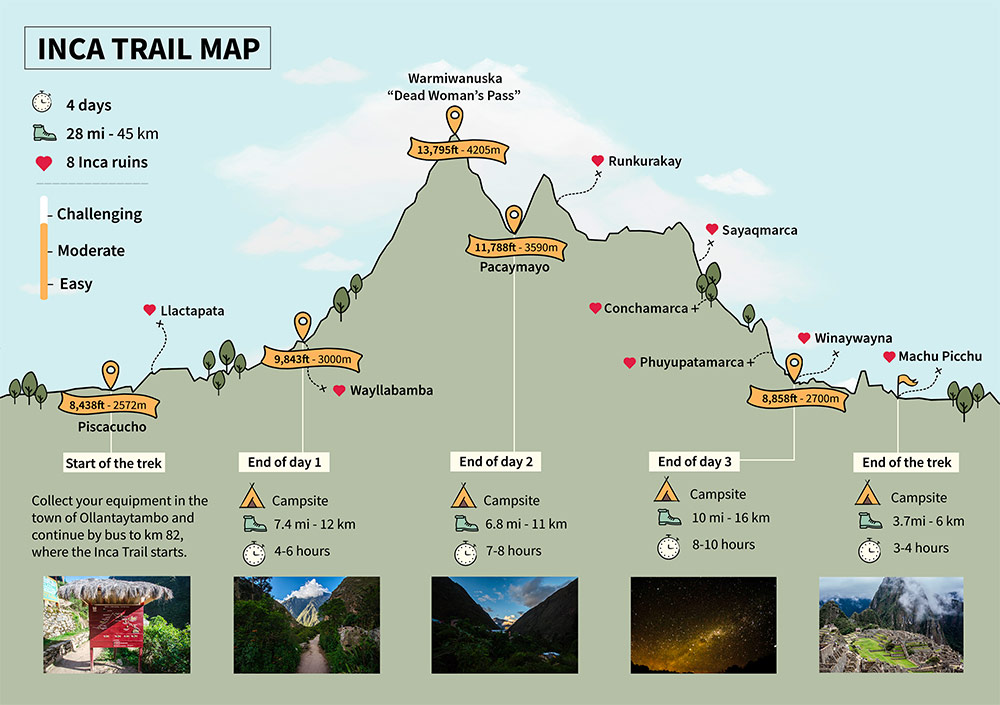
Machu Picchu has a subtropical highland climate. In comparison with Cusco and the Sacred Valley, Machu Picchu experiences warmer temperatures due to its lower elevation. There are two distinct seasons at Machu Picchu: the dry season and the rainy season. Shoulder seasons are the months that lie in between. Generally, the dry season correlates with the southern hemisphere’s winter months and the rainy season with its summer months. As conditions can change quickly, it is best to prepare for both rain and shine. Even during the dry season, there is a chance of showers.
From May to September While clear, sunny weather is the norm, scattered rain showers are not uncommon even in the dry season. Evenings are generally clear but cold.
From November to March Bring an umbrella and a rain jacket, and be ready for the slight possibility of weather-related travel delays. However, intermittent clear weather is also likely. Evening temperatures are cool.
April & October During these months the weather transitions between the dry and rainy seasons. The weather forecast is difficult to predict. Some days may be sunny, rainy, or something in between.
Machu Picchu is a year-round destination. However, there are distinct advantages to traveling during each season. While there is still the chance of rain during the dry season, it is minimal. This makes for clear views and excellent hiking conditions. In contrast, during the rainy season, crowds are smaller, and the heavy mist adds a sense of mystique. The shoulder months offer a balance with temperate weather and fewer travelers.

Aguas Calientes is a small town located at the base of Machu Picchu. Isolated from other communities, it is only reachable via train or on foot. The train journey is about 4 hr 40 min from San Pedro Station (Cusco), 3 hr 20 min from Poroy Station (Cusco), 2 hr 35 min from Urubamba Station (Sacred Valley), and 1 hr 25 min from Ollantaytambo Station (Sacred Valley).
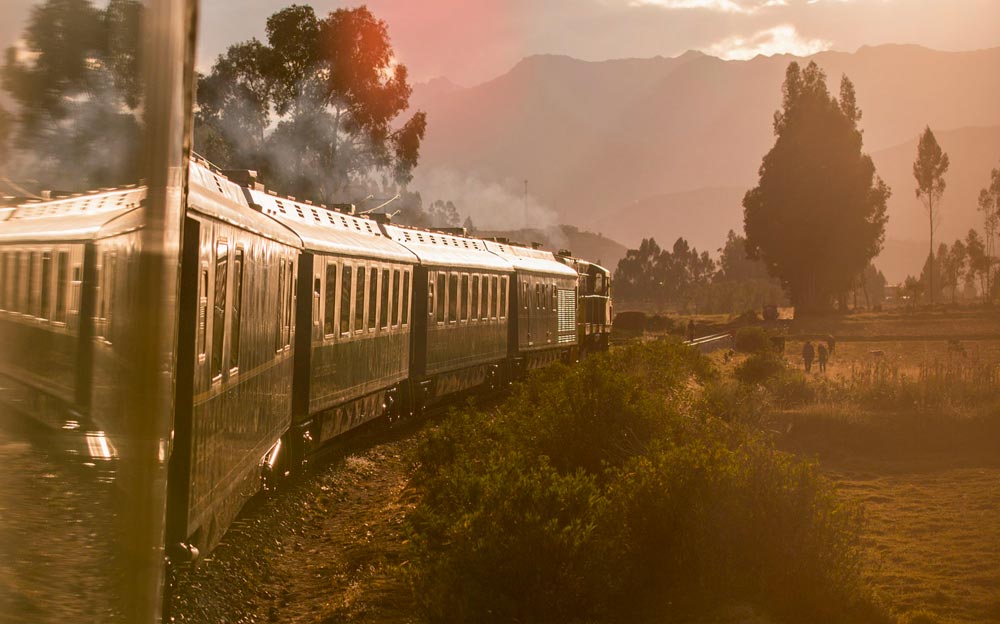
PeruRail offers journeys with three types of trains:
*From January 2 until May 1 bimodal transportation (bus + train) is in effect for travel to/from Cusco. This is in order to avoid delays due to heavy rain and landslides. Transport is by comfortable bus from Cusco to Ollantaytambo and by train from Ollantaytambo to Aguas Calientes (Machu Picchu).
Upon arrival at the Aguas Calientes Train Station, either walk to the bus station for your ride up to the ruins or to your hotel (5–10 min). Aguas Calientes was largely developed for tourism, so there are many hotels and restaurants, but no cars. Everything is within walking distance.
To reach Machu Picchu from Aguas Calientes, visitors must take a 25-minute bus ride. There is one bus stop in Aguas Calientes that you can walk to from the train station or from your hotel. Buses depart every 15 minutes from 5:30 am–3:30 pm. However, it is advisable to arrive early as the line to board can be up to 1 hour long during the high season. From Aguas Calientes, the bus zig-zags up the mountain and stops directly outside the entrance to Machu Picchu. For the return journey to Aguas Calientes, the bus also departs every 15 minutes, but from 6:00 am–5:30 pm.
There are several treks to Machu Picchu that are perfect for travelers in search of an adventure.
The 4-day Inca Trail is the most sought after trek in Peru. So much so that permits sell out months in advance. This trek begins near the quaint town of Ollantaytambo in the foothills of the Sacred Valley, and traverses 30 miles (49 km). Trekkers immerse themselves in nature and sleep in tents for three nights. On clear evenings, the star-gazing is phenomenal. This iconic trail winds its way through the mountains, directly to Machu Picchu. On the morning of Day 4, trekkers enter the magnificent citadel through its Sun Gate, which affords an incredible view of the ruins. After celebrating their arrival, the 2.5-hour tour of the ruins begins.

For travelers who would like to enter Machu Picchu through the Sun Gate but can’t devote four days to trekking, the 2-day Inca Trail (short Inca Trail) hike is a great alternative. Unlike the 4-day Inca Trail, this hike does not include camping. Hikers travel via train from Ollantaytambo to Km 104, where they disembark and begin the 7-mile (11 km) hike. Arrival to Machu Picchu’s Sun Gate is in the late afternoon. Because of this late arrival time, hikers spend the night in a hotel in Aguas Calientes and return to the ruins the next day to complete their Machu Picchu tour.
The Salkantay Trek is ideal for trekkers who would like to test themselves with a more challenging expedition. This trek totals 32 miles (51 km) and crosses the Salkantay Mountain pass, which lies at a lofty 15,090 ft (4,600 m). Trekkers experience a variety of landscapes, ranging from verdant forest to snow-capped mountains. Unlike the Inca Trail, the Salkantay hike does not lead directly to Machu Picchu. Instead, the trek ends in the Sacred Valley, from where travelers take a train to Aguas Calientes and spend the night in a hotel. The Machu Picchu tour takes place the following day.
The Lares Trek is recommended for travelers who are interested in both cultural immersion and adventure. This 21-mile (34 km) trek winds through vast Andean landscapes and remote villages. Travelers will experience precious encounters with local people and have the opportunity to learn about their way of life. Like the Salkantay Trek, the Lares trail ends in the Sacred Valley with a train to Aguas Calientes and hotel stay.
Construction for Machu Picchu most likely began in the mid-15th century. Under the reign of Pachacuti, the 9th king, the Inca Empire reached its height. The royal estate of Machu Picchu was an expression of the emperor’s power.
As with other Inca palaces and temples, Machu Picchu was also a religious center with astronomical functions. Many of the citadel’s stone structures align with either the solstices or the peaks of nearby sacred mountains, such as Salkantay.
Did Machu Picchu decline after the death of Pachacuti or was it abandoned during the Spanish Conquest? Researchers are not certain. But the Spanish certainly never found the site. With the passage of time, the citadel was gradually swallowed up by the cloud forest, meaning much of its majesty was preserved.
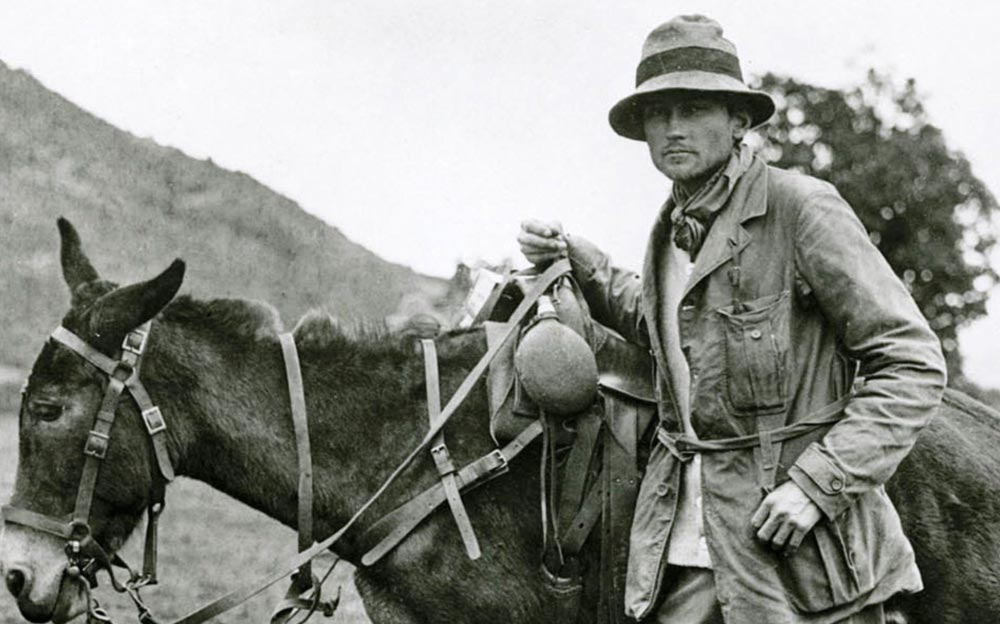
Beginning in the late 19th century, explorers in search of lost Incan treasures began traversing the mountains north of Cusco, where the Andes become the Amazon. In 1911, Hiram Bingham was introduced to the jungle-covered ruins by local guides who were familiar with the site. After years of silent existence, Machu Picchu was flung into the international spotlight.
Today the Inca ruins are a protected UNESCO Historic Sanctuary visited by nearly 1 million travelers each year.
Built on a terraced pyramid within the citadel, the Sacred Plaza is the principal religious center of Machu Picchu.
The “Hitching Post of the Sun” aligns with the solstices and the four cardinal directions. Once found throughout the Inca Empire, this carved boulder is one of the few that survived the Spanish Conquest.
Located on the Sacred Plaza, three enormous trapezoidal windows frame a breathtaking view of the mountains beyond.
Join a tour with one of our expert local guides. Learn about the history and significance of the Inca citadel, as well as the astounding engineering prowess that has ensured its longevity.
Choose the classic 4-day trek or the shorter 2-day trek - either one affords you privileged entry into Machu Picchu via the famed Sun Gate.
Devote two days to an extensive exploration of Machu Picchu, and ensure you make the most of your once-in-a-lifetime trip to Peru. Book one night in Aguas Calientes or at the Sanctuary Lodge.
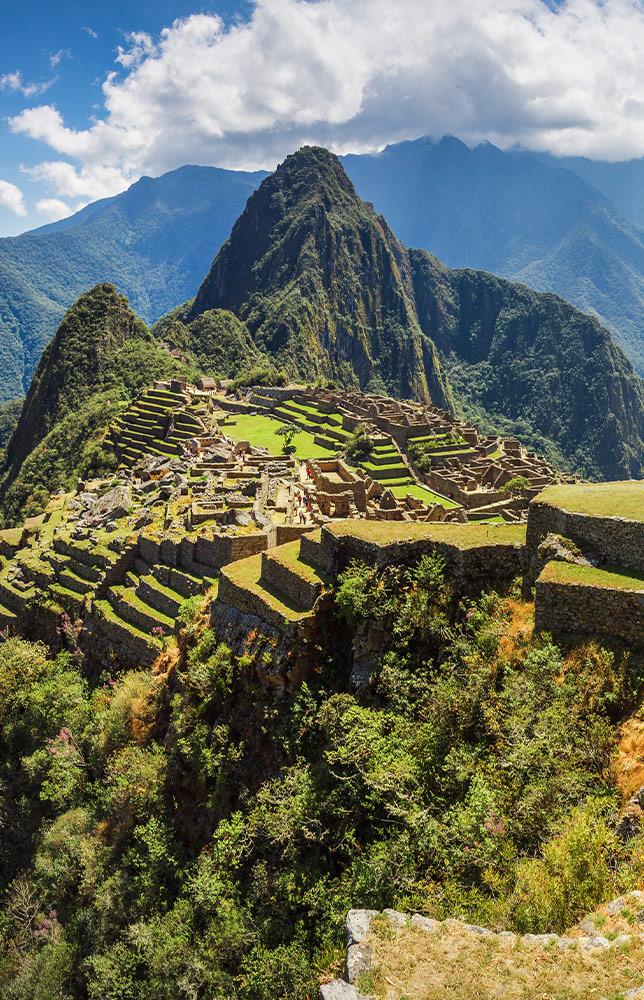
12 days
Cusco, Lima, Machu Picchu, Puno & Lake Titicaca, Sacred Valley, Arequipa, Colca Canyon
To enter Machu Picchu, visitors must present their pre-purchased tickets and original passport. Entrance is permitted using the following tickets:
Each Machu Picchu general entrance ticket allows visitors one hour to enter the site from the indicated start time. Ticket times are once every hour on the hour from 6:00 am until 3:00 pm. Be sure to account for the 25-minute bus ride from Aguas Calientes to Machu Picchu and up to an hour wait to board the bus.
The Huayna Picchu and Machu Picchu Mountain tickets both have three entrance options:
Huayna Picchu
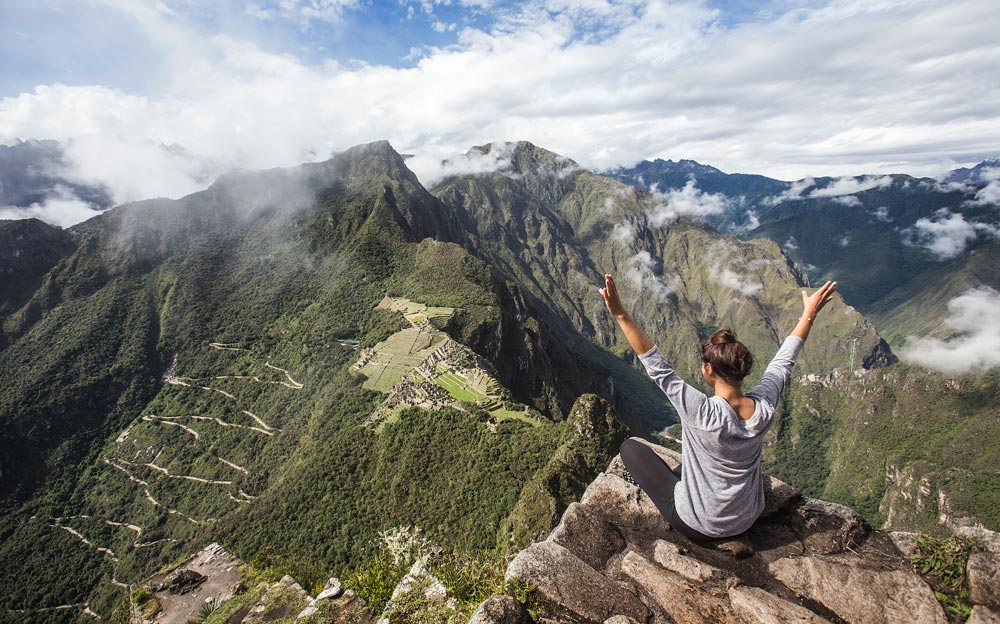
Machu Picchu Mountain Hike
The advantages of the first entrances are that temperatures will be cooler and there will be no hikers descending as the first group ascends each mountain. On the other hand, it is less likely to be misty during the second entrance, increasing the chances of spectacular views.
Typically Machu Picchu general entrance tickets sell out 2-4 weeks in advance, while hiking and trekking permits can sell out up to 6 months beforehand.
Each type of ticket allows entrance into Machu Picchu for a designated amount of time:
Visitors can choose to explore Machu Picchu via two circuits. Each option includes stops at the citadel’s most important sites. Travelers with limited mobility are recommended to take Route 1 as it has less steep inclines and steps compared to Route 2. Visitors who plan to hike to the Inca Bridge, Sun Gate, Machu Picchu Mountain, and Huayna Picchu should continue on the blue paths. Only on these paths are you able to backtrack.
Hotels in Aguas Calientes range from cozy budget options to luxurious 5-star hotels. All offer easy access to the town’s train station and bus stop. There are also some excellent spa services at 4 and 5-star hotels that are great for unwinding after a day at the ruins. Below are our top picks for staying in Aguas Calientes.
There are few lunch options available directly outside of the Machu Picchu ruins. However, visitors will find many more restaurants in Aguas Calientes. Below are our top picks for dining on the day of your Machu Picchu tour.
You can buy food outside the entrance gates to Machu Picchu or plan ahead and pack a boxed lunch.
Located to the right of the entrance, the snack bar with outdoor seating is a convenient place to grab a bite to eat. Food options include sandwiches, empanadas, burgers, and small pizzas.
Tinkuy Restaurant is a pleasant place to escape the crowds of Machu Picchu and enjoy a daily buffet lunch from 11:00 am to 3:30 pm. Choose from an elaborate spread of international and Peruvian dishes.
Select cafes and hotels in Aguas Calientes are happy to pack a box lunch (for an additional fee) that you can enjoy outside the ruins. These lunches usually include a sandwich, snacks (nuts, cereal bars, or fruit), and a drink.
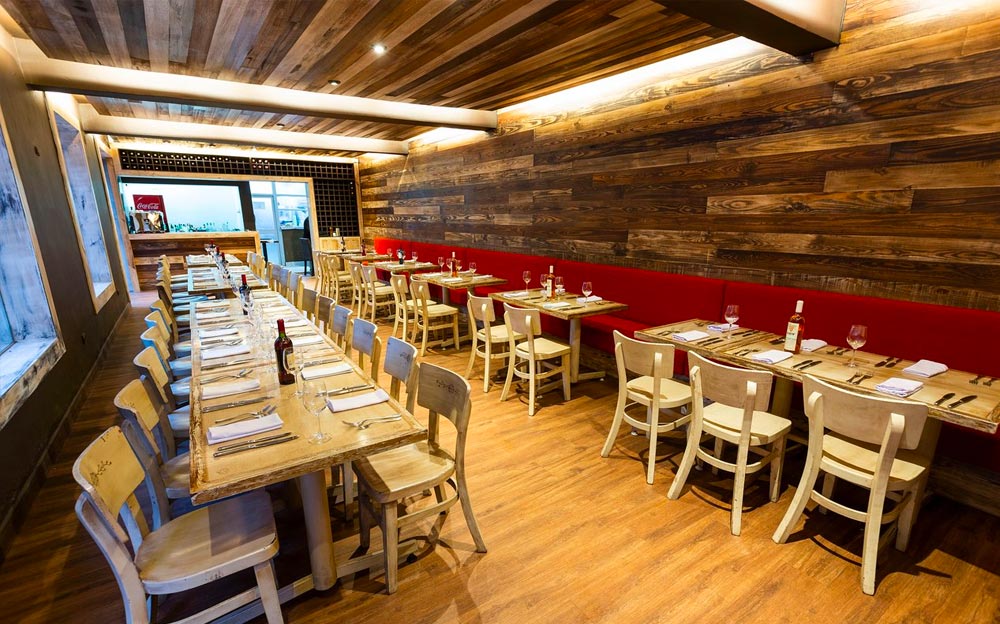
Aguas Calientes is packed with restaurants serving traditional Peruvian food, Novo-Andean cuisine, and familiar international favorites. like pizza, burgers, and pasta.
Located up a steep alleyway on the edge of town, this excellent restaurant serves a menu of Peruvian fusion cuisine with Andean, Italian, Asian, and Latin American influences. Try the salmis de lomo (fettuccine with tender beef), pork ribs in elderberry and tamarind sauce, or alpaca anticuchos (grilled skewers). There are also several delicious options for vegans and vegetarians.
Calle Huanacaure 105
Satisfy your craving for carbs with homemade pasta and wood-fired pizzas featuring fresh toppings and real mozzarella. Wash it all down with a craft beer or an Italian or South American wine.
Av. Pachacutec 6 (no number)
Mouth-watering Peruvian fusion dishes including trout ceviche, osso bucco, perfectly grilled chicken breast, delicious salads, and tasty appetizers. If you’ve got room for dessert, go for the Tres Leches cake.
Av. Imperio de los Inca 140
The place to go for sweet and savory treats after a long day of exploring Machu Picchu. Try a croissant, lemon tart, bruschetta, or a baguette.
Jr Sinchi Roca (above the bus station)
A favorite among travelers for its menu of Peruvian classics with a French twist. Try the river trout or the grilled chicken, each prepared with seasonal Andean ingredients. Enjoy drinks at the quirky Captain’s Bar before or after dinner.
Calle Lloque Yupanqui 103
Ideal for large groups, serving an all-you-can-eat buffet as well as an extensive a la carte menu. A convenient location close to the train station, views over the river, and live music in the evenings round out Toto’s offer.
Av. Imperio de los Incas (no number)
For something more refined, make dinner reservations at one of the following hotel restaurants:
There are no ATMs at the ruins. Be sure to bring enough cash for tips, drinks, and snacks. Just outside the ruins, the Belmond Sanctuary Lodge does accept credit cards at its restaurant.
Tipping/gratuities: Giving a tip to your guide is not expected or required, but it is a great way to show your appreciation for a job well done.
Down in Aguas Calientes, ATMs are located on the major streets, but these are known for often being out of order. Most hotels and restaurants accept major credit cards. Expect slightly higher prices for goods and services including bottled water, meals at restaurants, etc., compared to Cusco or anywhere else in Peru. Tourism is the town’s only industry and everything must be shipped in by train.
Prepare a daypack for your tour of Machu Picchu. You can leave large luggage at your hotel. What you need:
What to wear:
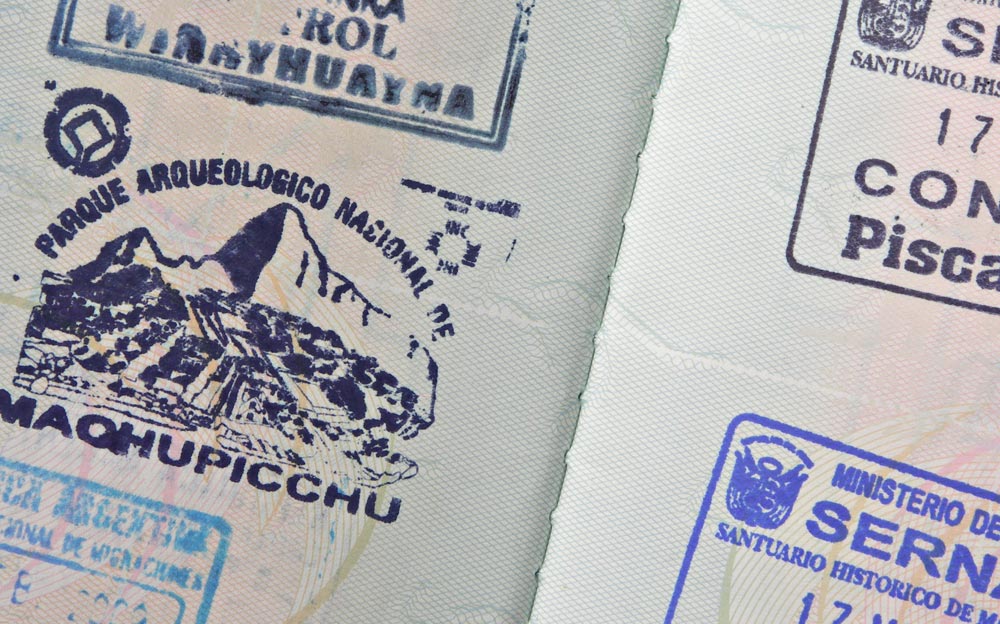
If you spend the night in Aguas Calientes, hotels provide complimentary luggage storage during your Machu Picchu tour.
Note that PeruRail allows a maximum of 11 lbs (5 kgs) of luggage per passenger. You can leave larger and excess luggage in storage at your hotel in Cusco or the Sacred Valley.
Traveling to Peru, especially in the peak season (June, July, August), requires lots of planning several months in advance. This includes booking hotels in Cusco and Aguas Calientes (Machu Picchu), flights to/from Cusco, train tickets to/from Machu Picchu, Huayna Picchu tickets (limited to 400 and sell out weeks in advance) and Inca Trail permits if applicable. Last-minute trips can be pulled off, but limited availability for hotels and train tickets can be an issue.
Your camera phone is sufficient to take quick photos to share instantly with your friends and family back home. But for higher quality photos, you will need a proper camera.
Machu Picchu is lower in elevation than Cusco. Machu Picchu sits at 7,790 ft (2,430 m) while Cusco is at 11,150 ft (3,400 m). Altitude sickness is, therefore, less of an issue at Machu Picchu.
Nonetheless, altitude sickness is a common concern. There’s no foolproof way to prevent the minor symptoms of altitude sickness, such as a headache, loss of appetite, nausea, and shortness of breath. But there are measures you can take to help you acclimatize with more ease. While at higher elevations, be sure to drink plenty of water and eat light meals. During your tour of Machu Picchu, wear sun protection, walk at a comfortable pace, and take rest as needed.
Aguas Calientes, also known as Machu Picchu Pueblo, is the town at the base of the Machu Picchu ruins. Nearly every traveler to Peru passes through this gateway to South America’s most famous ruins.
Getting there:
Getting around:
Aside from the shuttle bus to/from the ruins, the only way to get around town is on foot. If you have luggage, hotel baggage handlers are available to assist with getting bags to/from the train station. Note that due to geography, most streets in Aguas Calientes have either steps or steep inclines.
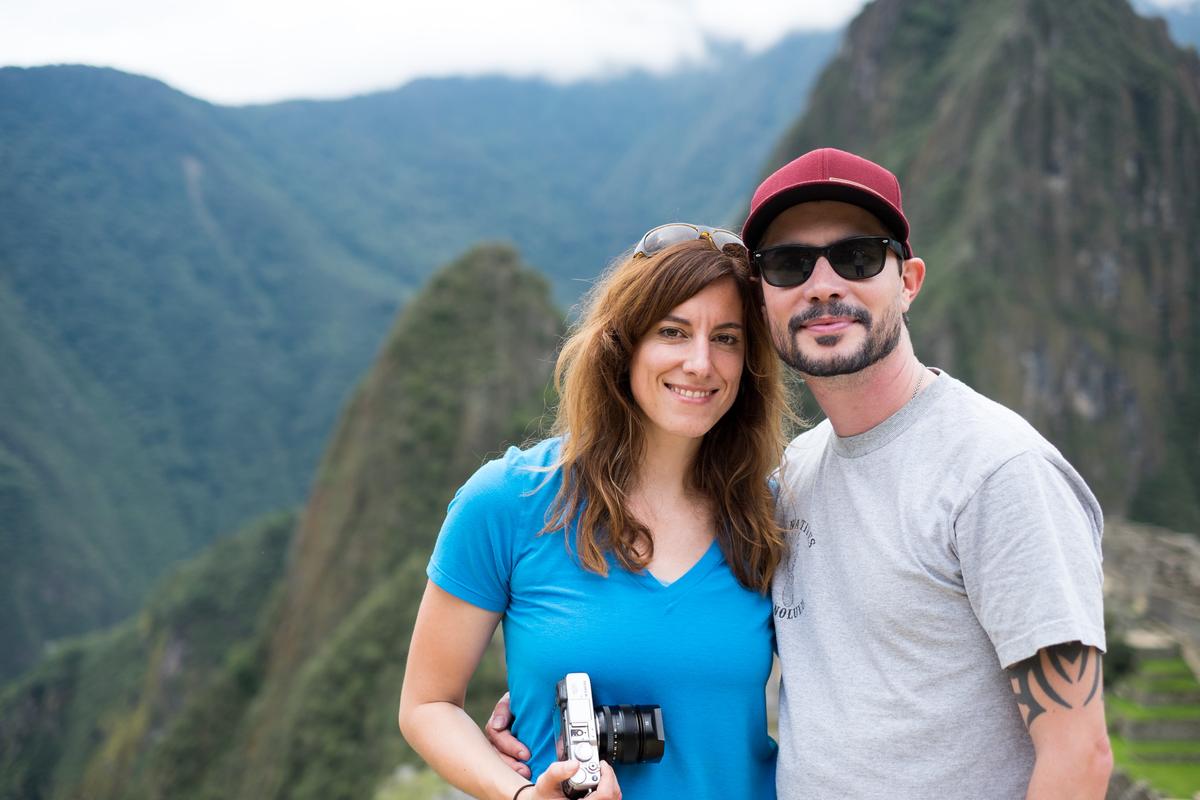
A Peru honeymoon is a dream trip for many couples thanks to the mystical archeological site of Machu Picchu. Combined with Peru’s fascinating history, tranquil landscapes, and uniquely flavorful cuisine, it is one of the most romantic honeymoon destinations in the world.
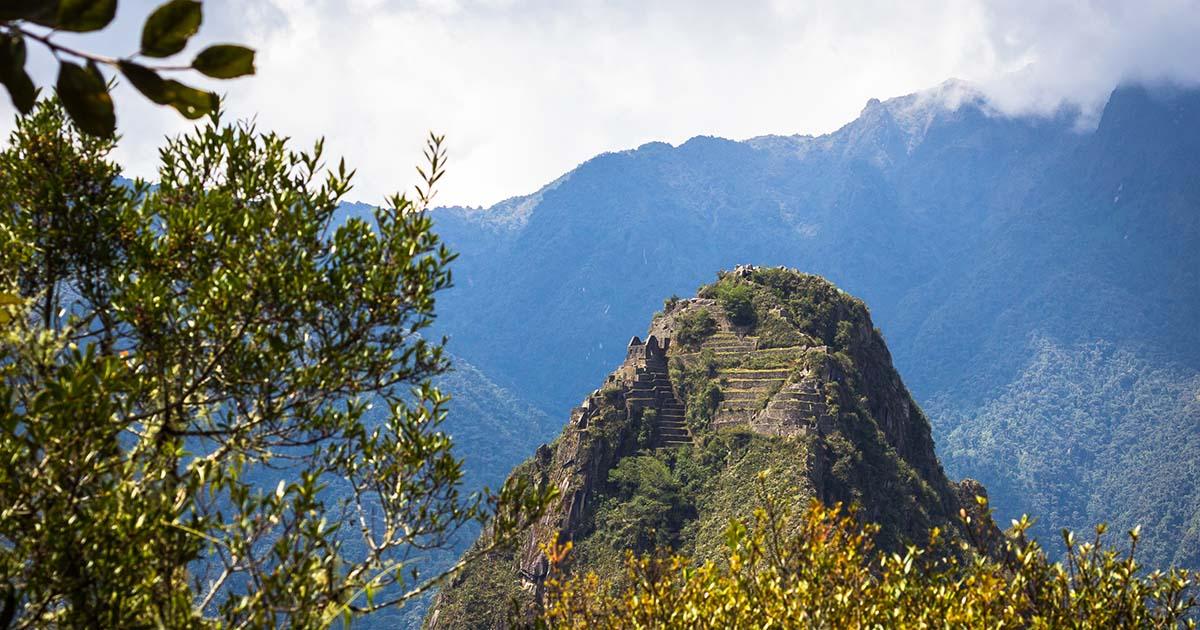
Huayna Picchu, which in Quechua roughly translates to “Young Peak,” is the majestic sugarloaf mountain that rests behind the northern side of Machu Picchu. Its dramatic shape and backdrop against the ruins are, in part, why Machu Picchu is so striking in appearance.